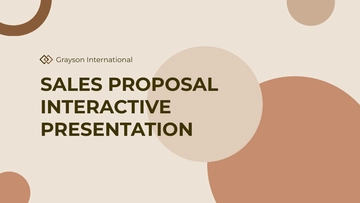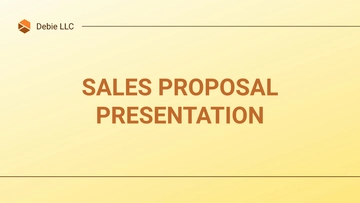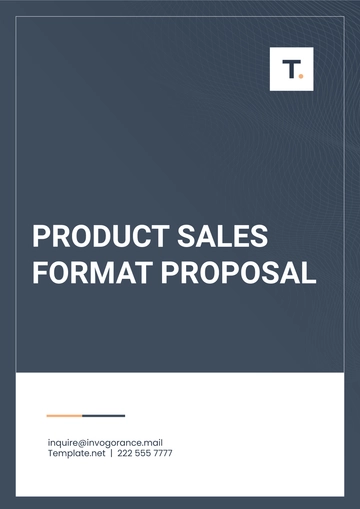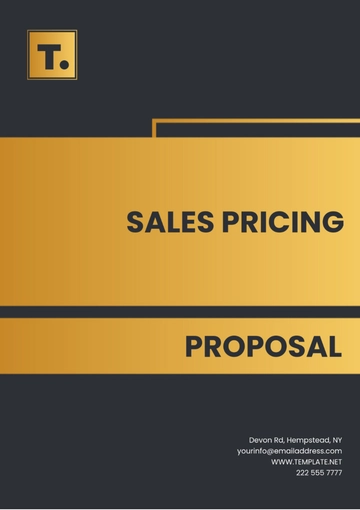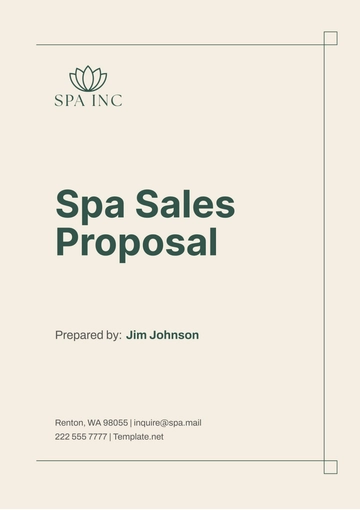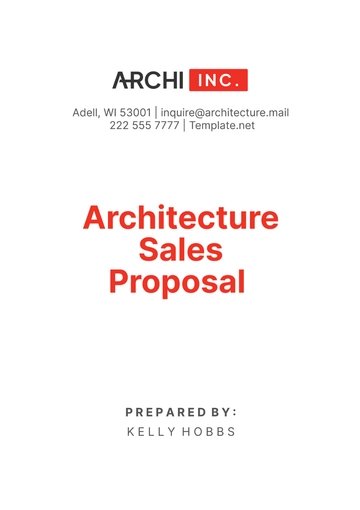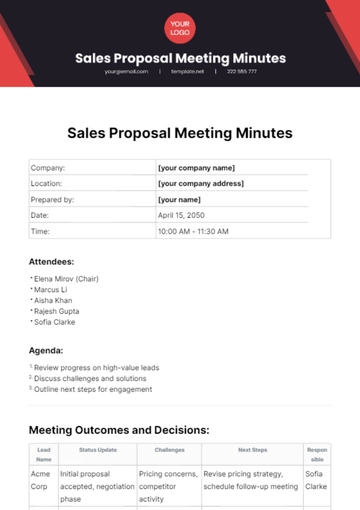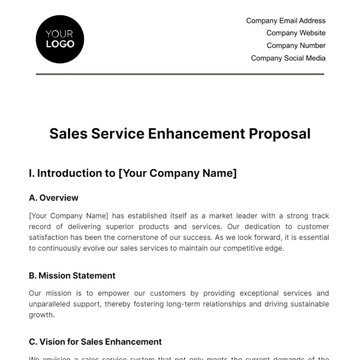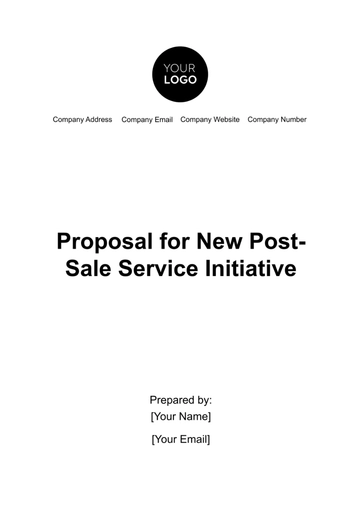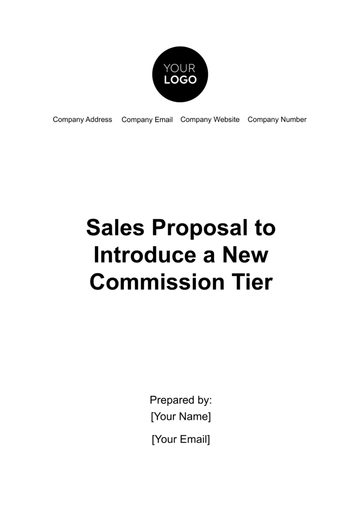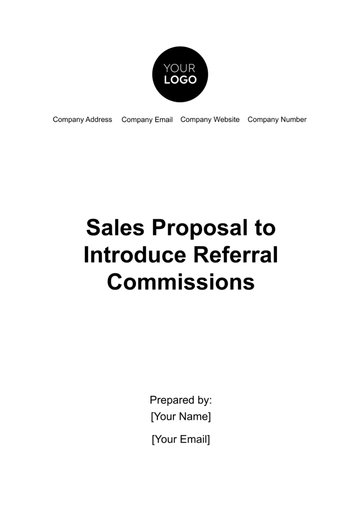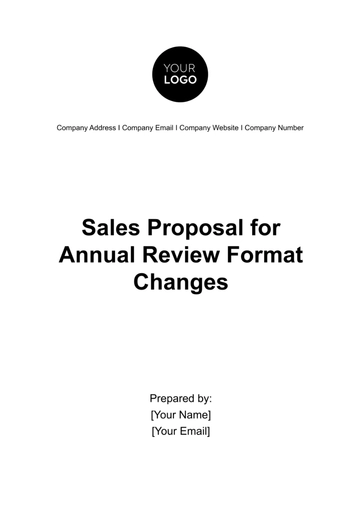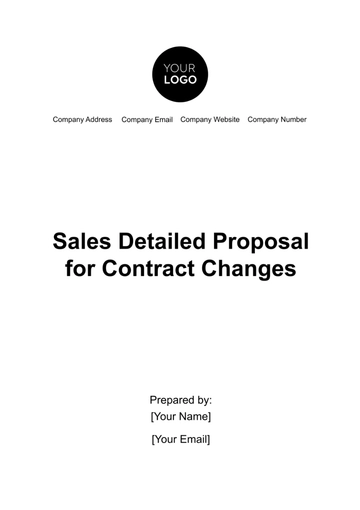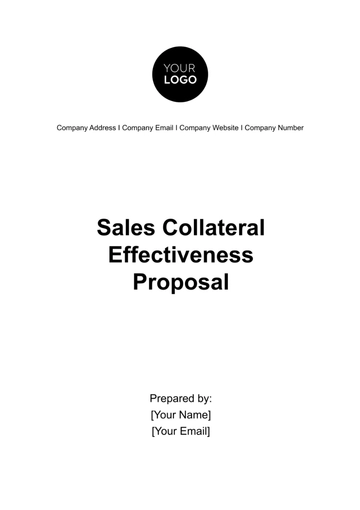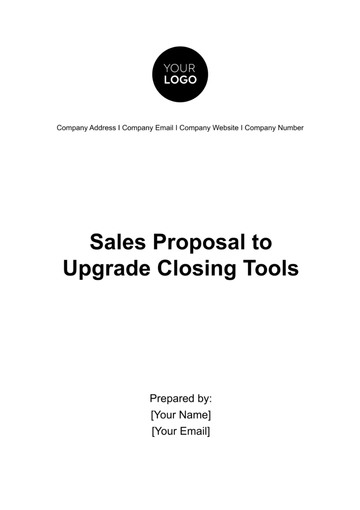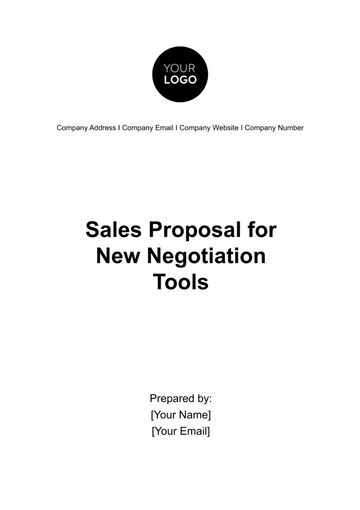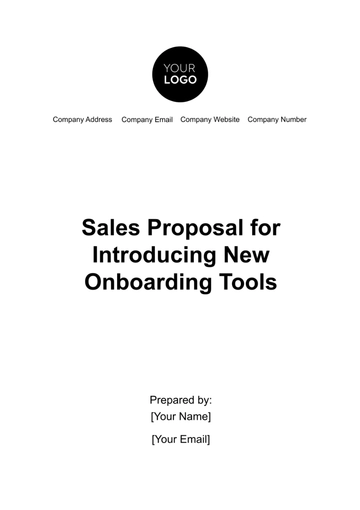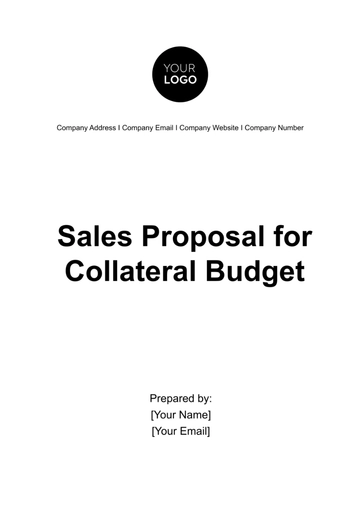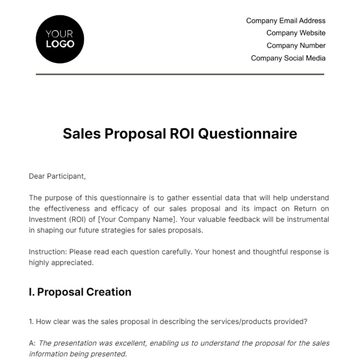Free Sales Proposal Clarification Guide
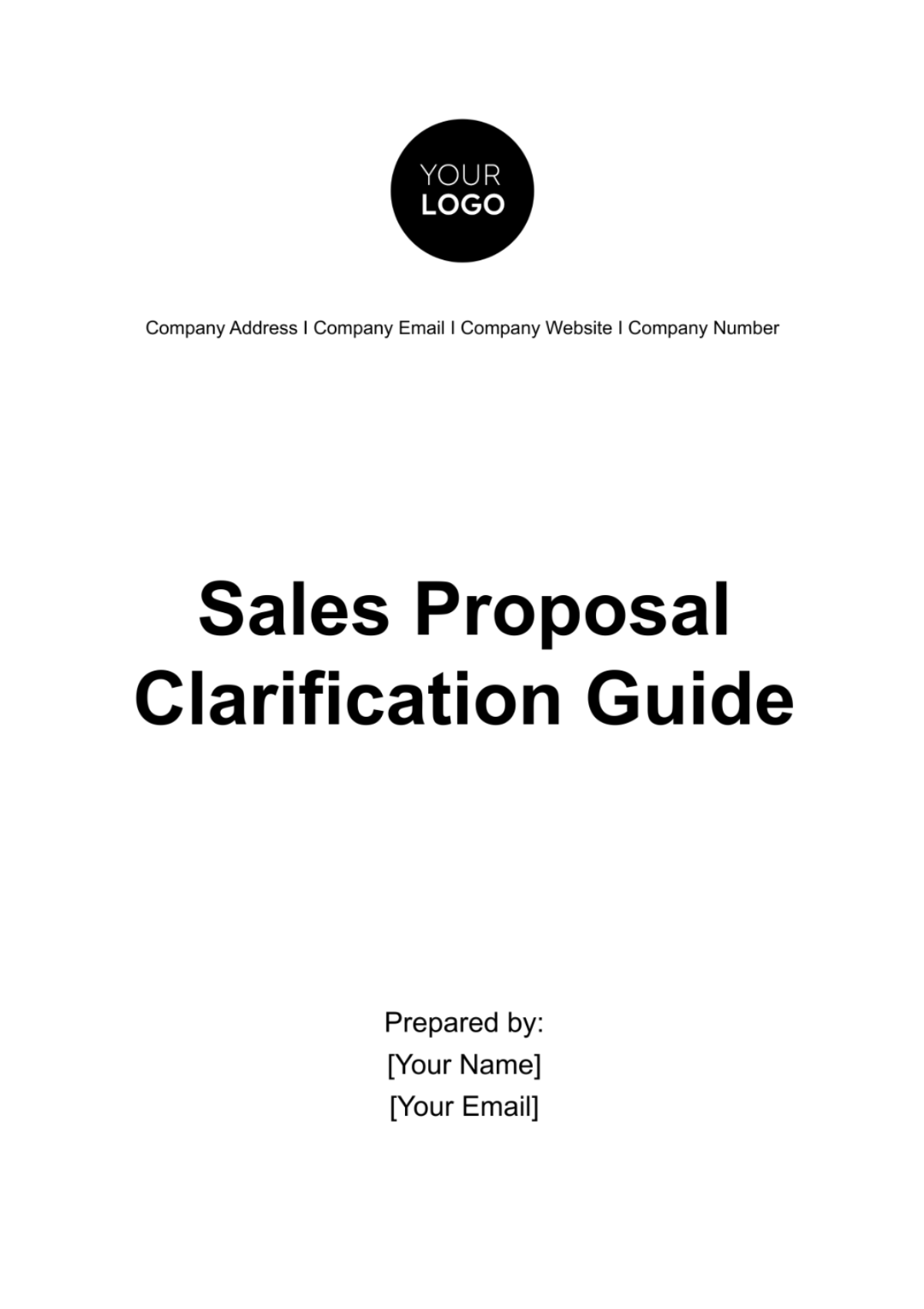
I. Introduction
The sales proposal is a critical document that often serves as a decisive factor in the acquisition of new clients or the retention of existing ones. However, due to the complexity and specificity of each proposal, questions and uncertainties may arise that necessitate clarification. This guide provides comprehensive instructions for addressing these queries to ensure a consistent and efficient process within [Your Company Name].
A. Objective of This Guide
The primary goal of this guide is to standardize the approach for clarifying elements within sales proposals across all departments involved in the sales process. By adhering to the procedures and protocols outlined here, we aim to minimize errors, optimize time management, and increase the overall effectiveness of our sales proposals.
B. Target Audience
This guide is intended for use by all personnel involved in the creation, review, submission, and clarification of sales proposals. This encompasses Sales, Engineering, Legal, and any other departments that contribute to the proposal process.
II. Pre-Proposal Clarifications
Before a sales proposal is finalized and sent to the prospective client, it is imperative that all internal ambiguities are addressed. A well-vetted pre-proposal significantly minimizes the chances of post-submission queries, thereby streamlining the sales cycle.
A. Procedure
The procedure for pre-proposal clarification serves as a comprehensive framework for ensuring that all components of the sales proposal are rigorously examined and aligned with client objectives before the document is officially sent. The primary focus of these discussions is to guarantee that the proposal is not only internally coherent but also thoroughly attuned to the client's specific needs, expectations, and preferences.
B. Process Flow
The following chart showcases the visual representation of the flow:
Initial Drafting: The sales team initiates the proposal creation process by generating a preliminary draft. This initial version is formulated based on a synthesis of client requirements gathered during prior discussions and internal assessments that may include resource availability, technical capabilities, and cost structures.
Departmental Review: Once the initial draft is complete, it is systematically disseminated to all relevant departments for a thorough evaluation. Each department is given a specific timeframe to scrutinize their respective sections of the proposal, taking into account not only factual accuracy but also coherence and alignment with client goals.
Collaborative Review Sessions: Subsequent to the departmental assessments, a series of collaborative review sessions are organized. During these sessions, representatives from each department come together to present their findings, voice any concerns, and suggest revisions. These meetings are essential for cross-departmental coordination and ensure that the proposal reflects a unified, coherent strategy.
Implementation of Changes: Post-review, all agreed-upon changes and amendments are implemented into the draft proposal. These modifications may range from minor adjustments in phrasing to substantive alterations in technical specifications or pricing models.
Final Approval: The modified proposal undergoes one final round of scrutiny by all contributing departments. Sign-offs are secured to confirm that each section meets both internal standards and client specifications. Only upon receiving unanimous approval is the proposal deemed ready for submission to the client.
C. Common Areas for Clarification
Certain elements of the proposal are more prone to ambiguity and thus require special attention. These aspects usually involve technical specifications, pricing models, and contractual terms.
Item | Department Responsible | Timeframe (Days) |
Technical Specifications | Engineering | 3 |
Pricing Model | Sales | 2 |
Contract Terms | Legal | 4 |
D. Interdepartmental Communication
Interdepartmental communication forms the backbone of a seamless and effective sales proposal process. An efficient communication strategy involves multiple facets, each contributing to the successful alignment of the proposal with both client and internal objectives.
Scheduled Meetings: Effective planning is essential for well-coordinated interdepartmental communication. Meetings should be scheduled well in advance to ensure availability of key personnel from all relevant departments. Agendas for these meetings should be prepared and circulated beforehand, offering team members ample time to prepare their contributions.
Documentation: Accurate and comprehensive documentation serves as an invaluable reference throughout the sales proposal process. All discussions, questions, clarifications, and agreed-upon changes should be meticulously documented. This record-keeping provides a verifiable trail for internal review and accountability, mitigating the risks of misunderstanding or oversight.
Sign-off Mechanism: The integrity of the sales proposal is validated through a formal sign-off mechanism. This can be implemented digitally using specialized software or manually through paper-based forms. Each department is responsible for reviewing and approving the sections of the proposal pertinent to their expertise.
III. Client Queries
Client-initiated queries about the sales proposal are a routine yet crucial part of the proposal process. These queries can serve as a barometer of how well the proposal aligns with the client's understanding and expectations. Handling such queries with promptness, professionalism, and accuracy is paramount to maintaining a favorable business relationship and securing the contract.
A. Procedure for Handling Client Queries
Managing queries from clients with expediency and accuracy is essential for preserving the integrity of the sales process and sustaining positive client relationships. A structured approach to dealing with such queries can mitigate risks and offer a streamlined experience for both the client and the internal team.
Acknowledgement: The cornerstone of effective client relations is timely communication. Upon receipt of a query, it is crucial to send an acknowledgment within a predetermined time frame. The acknowledgment can be conveyed via the client's preferred channel—be it email, phone, or through a Customer Relationship Management (CRM) system. This step serves to reassure the client that their query is in the pipeline for resolution.
Logging and Routing: To ensure organizational efficacy and accountability, the query should be logged into a tracking system, such as a CRM, that is accessible to relevant team members. A unique identification code should be assigned to each query for easy tracking. Following this, the query is routed to the department most competent to address the issue, whether it pertains to technical specifications, pricing, or contract terms.
Response Preparation: A specialized team within the designated department is responsible for preparing a well-structured response. This should be done with great attention to detail to ensure the response not only addresses the query at hand but is also consistent with information provided in the proposal and other client communications. Often, consultation with other departments may be necessary to provide a holistic and accurate answer.
Review and Approval: Prior to client communication, the prepared response must be reviewed by designated approvers within the department and possibly higher levels of management. This internal review process ensures that the response is factually correct, aligns with company policy, and maintains consistency with the original proposal and any prior client interactions.
Communication: The approved response is then conveyed to the client through formal channels, adhering to communication protocols that maintain a consistent and professional tone. Clear, concise language should be used to eliminate any potential ambiguities.
Follow-up: The cycle concludes with a proactive follow-up to confirm that the client has received the response and to inquire if it has adequately addressed their query. If additional questions arise, they are processed through this same procedural framework. All interactions should be logged and documented to serve as an audit trail and for future reference.
B. Types of Queries and Corresponding Departments
The classification of client-initiated queries into specific types aids in streamlining the response process, ensuring that each question or concern is addressed by the department most equipped to provide an authoritative and accurate reply. The following table provides a general guideline on the priority level and recommended response time for each query type.
Item | Priority Level | Response Time (Hours) |
Technical Specifications | High | 24 |
Pricing Model | Medium | 12 |
Contract Terms | Low | 48 |
C. Routing Procedures
Upon receipt and logging of a client query, a specialized routing algorithm within the CRM system or other internal tools will automatically direct the query to the department outlined in the table. In the case of multi-disciplinary queries that span across various departments, a cross-departmental team may be convened to collaboratively formulate a comprehensive response.
IV. Client Feedback and Continuous Improvement
Incorporating client feedback into the sales proposal process serves dual purposes: it not only refines the current proposal but also enriches future proposals by integrating lessons learned.
A. Methods for Collecting Feedback
Client feedback is invaluable for the continuous improvement of the sales proposal process. Below are some of the methods [Your Company Name] employs to gather this critical input:
Post-Proposal Surveys: Once a sales proposal has been formally submitted and subsequently reviewed by the client. These surveys are designed to be user-friendly and can be completed within a few minutes, encouraging higher response rates. They typically include both closed-ended questions for quantitative analysis and open-ended questions to capture qualitative insights. The resulting data serves as a preliminary overview of the proposal's effectiveness and the client's perception of the same.
Client Interviews: For more nuanced understanding and deeper exploration of client perspectives, one-on-one interviews are conducted with key decision-makers or influencers within the client organization. These interviews are usually scheduled at the convenience of the client and are guided by a structured questionnaire. However, they also allow for open discussion to capture unanticipated insights that may not be readily apparent in written feedback forms. Client interviews provide an opportunity to delve into specific strengths or weaknesses of the proposal and can often reveal contextual details that enrich the feedback analysis.
Internal Debriefs: In addition to external feedback, insights from the internal team responsible for crafting the proposal offer a unique vantage point. These debriefing sessions are scheduled after the proposal submission and engage cross-functional team members in a structured dialogue about what went well and what could be improved. Factors like the effectiveness of interdepartmental collaboration, alignment with client needs, and overall process efficiency are discussed. Internal debriefs help to identify operational bottlenecks or gaps in the existing proposal process, thereby offering an avenue for procedural refinement.
B. Feedback Analysis
Once feedback is collected, it must be systematically analyzed to identify common trends, outliers, or specific areas requiring attention. This analysis should be conducted by a dedicated team that compiles the data and prepares a comprehensive report.
Metrics | Scoring Range | Notes |
Clarity | 1-5 | Measures how clear the proposal is conveyed |
Comprehensiveness | 1-5 | Evaluates the depth of content |
Responsiveness | 1-5 | Assesses the promptness of responses to queries |
C. Implementation of Improvements
The actionable insights derived from the feedback analysis should be integrated into a continuous improvement plan. This plan outlines the specific changes to be implemented, assigns responsible departments or individuals, and sets measurable targets and deadlines.
V. Conclusion
Clarifying sales proposals is a crucial aspect of maintaining a streamlined sales process and ensuring client satisfaction. By adhering to the guidelines outlined in this document, [Your Company Name] aims to deliver consistent, high-quality service throughout the proposal stage. For additional questions or clarifications regarding this guide, please consult the relevant departmental heads.
- 100% Customizable, free editor
- Access 1 Million+ Templates, photo’s & graphics
- Download or share as a template
- Click and replace photos, graphics, text, backgrounds
- Resize, crop, AI write & more
- Access advanced editor
Clarify your sales proposals in just a few easy edits with this editable Sales Proposal Clarification Guide Template on Template.net! This customizable solution which can be easily modified using our advanced AI Editor Tool, provides a comprehensive guide for clarifying sales proposals, promoting effective sales practices! Grab it right away!
You may also like
- Business Proposal
- Research Proposal
- Proposal Request
- Project Proposal
- Grant Proposal
- Photography Proposal
- Job Proposal
- Budget Proposal
- Marketing Proposal
- Branding Proposal
- Advertising Proposal
- Sales Proposal
- Startup Proposal
- Event Proposal
- Creative Proposal
- Restaurant Proposal
- Blank Proposal
- One Page Proposal
- Proposal Report
- IT Proposal
- Non Profit Proposal
- Training Proposal
- Construction Proposal
- School Proposal
- Cleaning Proposal
- Contract Proposal
- HR Proposal
- Travel Agency Proposal
- Small Business Proposal
- Investment Proposal
- Bid Proposal
- Retail Business Proposal
- Sponsorship Proposal
- Academic Proposal
- Partnership Proposal
- Work Proposal
- Agency Proposal
- University Proposal
- Accounting Proposal
- Real Estate Proposal
- Hotel Proposal
- Product Proposal
- Advertising Agency Proposal
- Development Proposal
- Loan Proposal
- Website Proposal
- Nursing Home Proposal
- Financial Proposal
- Salon Proposal
- Freelancer Proposal
- Funding Proposal
- Work from Home Proposal
- Company Proposal
- Consulting Proposal
- Educational Proposal
- Construction Bid Proposal
- Interior Design Proposal
- New Product Proposal
- Sports Proposal
- Corporate Proposal
- Food Proposal
- Property Proposal
- Maintenance Proposal
- Purchase Proposal
- Rental Proposal
- Recruitment Proposal
- Social Media Proposal
- Travel Proposal
- Trip Proposal
- Software Proposal
- Conference Proposal
- Graphic Design Proposal
- Law Firm Proposal
- Medical Proposal
- Music Proposal
- Pricing Proposal
- SEO Proposal
- Strategy Proposal
- Technical Proposal
- Coaching Proposal
- Ecommerce Proposal
- Fundraising Proposal
- Landscaping Proposal
- Charity Proposal
- Contractor Proposal
- Exhibition Proposal
- Art Proposal
- Mobile Proposal
- Equipment Proposal
- Student Proposal
- Engineering Proposal
- Business Proposal
